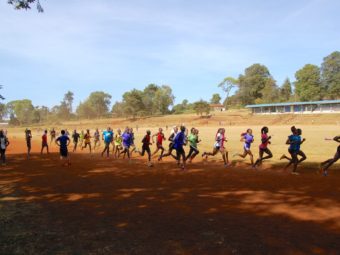When you decide to run an event in the near future, do you look for a training plan to help you prepare for the event? What are the things you feel your training plan must include in order for it to work for you? Number of running days a week, different types of runs, cross training days and maybe how to figure out what speed your training runs should be ran to reach a new race P.R.?
Most of the plans that are available on the internet are generic and could almost be viewed as a spreadsheet of items on a checklist that you need to check off to be able to toe the line on race day. If you begin to develop sore (insert any part of the body here) does your plan have instructions on how to adjust your plan? Some runners believe that they must stick to the plan exactly or they will not be able to run their chosen event. Here is the sad fact: If you continue to run with something hurting it is not going to heal up if you keep doing the same thing without making an adjustment. Another way to say this is doing the same thing over and over again and looking for a different result is the definition of insanity.
What most of us want as runners is achievable if you're willing to be patient and work at it over a lifetime. But what I call “the child in us” want instant gratification without doing a lot more work. We need to step back and take a look at the bigger picture if our goal to only run that one race or continue with running as a lifetime practice. If you choose lifetime, then maybe the plan you’re looking for would be one that allows you to improve but forgiving when you develop a niggle that needs some reduced running or even the dreaded timeout from running. What you need to know is missing a few days when the pain first presents itself is not going to cost you that much in the overall scheme of things. By not continuing to aggravate the injured area you’re allowing for healing to happen. If you can cross train without pain, then you can maintain your aerobic conditioning. When you return to running when the discomfort is gone, you still need to be guarded about doing too much too soon. Listen to what your body is telling you. You might need to reorganize your strength training program to address an inefficiency in your training plan that could have prevented the injury. In large scale emergency incidents, detailed plans are developed and implemented and then reevaluated to see if they are working. If the plan is not working, contingency plans are utilized to accomplish the goal. This might be a better way for an athlete to view their training plans when an injury throws a wrench in the chain.
One thing that Chi Running instructors tell their clients is the first part of any training plan should address running form. Depending on what type of race they are training for, form should encompass at least a third of the plan. This allows the individual to concentrate on feeling what correct running form should feel like prior to adding distance. As they are able to keep the form, then distance is slowly added to build mileage while holding the form. This allows for the subtle changes that are happening inside the body. Finally, speed is introduced but normally the runner will have already begun to notice their times improving without any effort due to just relaxing and letting gravity do its job. The ability to relax while going faster makes you a more efficient runner with less chance of a muscle strain. We believe in gradual progress. This principle states that everything grows incrementally through its own developmental stages, from less to more or from smaller to larger. When growth happens gradually, each step forms a stable foundation for the next step. This insures that nothing happens before its time and will protect you from overuse injuries.
The next time you decide to follow a plan, make sure it addresses the things that matter to you. Is it a plan that will allow for some flexibility, the right number of days for your lifestyle and keeps you on track to avoiding sidelining injuries? Contingency plans are an option to be considered. Remember they are just plans and sometimes plans need to be adjusted to meet a specific goal.




